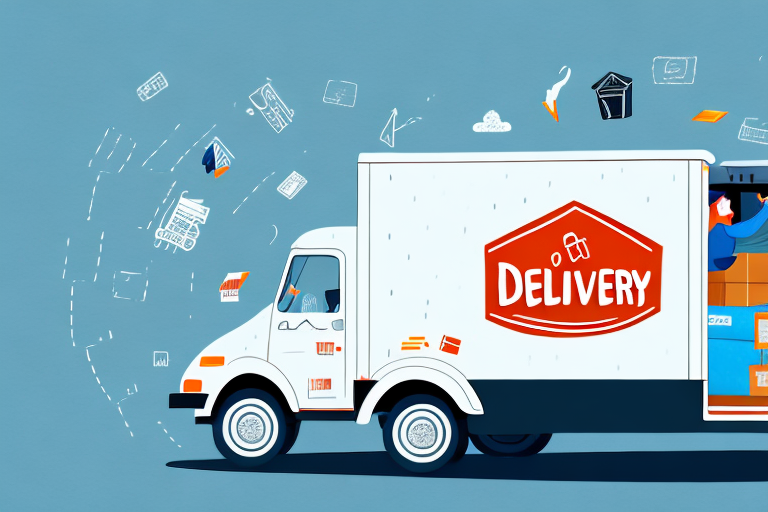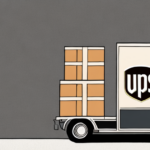Enhancing Customer Satisfaction through Delivery Flexibility
In today's highly competitive market, customer satisfaction is paramount. Delivery flexibility plays a crucial role in achieving this by offering customers a variety of delivery options tailored to their needs. Studies show that 83% of customers consider delivery speed and flexibility as key factors in their purchasing decisions (Brightpearl).
Offering Multiple Delivery Options
Providing options such as same-day, next-day, weekend, and scheduled deliveries allows customers to choose what best fits their schedule. This customization not only enhances the shopping experience but also fosters customer loyalty.
Real-Time Tracking and Notifications
Enable customers to track their orders in real-time and receive timely notifications. This transparency reduces anxiety and increases trust in the delivery process. According to a report by Supply Chain Digital, real-time tracking improves customer satisfaction by up to 30%.
Superior Customer Service
Providing excellent customer service throughout the delivery process, including prompt responses to inquiries and effective resolution of issues, builds trust and encourages repeat business.
Cost Reduction and Efficiency Gains
Delivery flexibility not only benefits customers but also offers significant cost-saving opportunities for businesses. By optimizing delivery processes, companies can reduce expenses and enhance operational efficiency.
Optimizing Shipping Routes
Using advanced routing software helps businesses determine the most efficient delivery paths, reducing fuel consumption and delivery times. This optimization can lead to a 20% reduction in shipping costs (Logistics Management).
Utilizing Regional Carriers
Partnering with regional carriers can lower shipping costs compared to using national carriers. Regional carriers often offer competitive rates and faster delivery times for local shipments.
Implementing Drop-Shipping Models
Drop-shipping allows businesses to ship products directly from suppliers to customers, eliminating the need for warehousing and reducing handling costs. This model can enhance efficiency and scalability.
Competitive Advantage in the Marketplace
In a saturated market, delivery flexibility serves as a differentiator, setting businesses apart from their competitors. It enables companies to quickly adapt to market changes and meet evolving customer demands.
Differentiating from Competitors
Offering a wider range of delivery options can attract more customers and retain existing ones. Businesses that prioritize delivery flexibility are often preferred over those with limited options.
Adapting to Market Changes
Flexible delivery strategies allow businesses to respond swiftly to fluctuations in demand, supply chain disruptions, or unforeseen events like natural disasters, maintaining service continuity and customer trust.
Improving Customer Loyalty
A positive and adaptable delivery experience fosters customer loyalty, leading to repeat purchases and positive word-of-mouth referrals, which are critical for long-term business growth.
Customizable Delivery Options for E-commerce
E-commerce platforms thrive on providing convenient and reliable delivery options. Customizable delivery enhances the shopping experience and meets the diverse preferences of online consumers.
Catering to Diverse Customer Preferences
Customers may have varying preferences for delivery locations and times. Offering options such as home delivery, pickup points, locker services, and specified time slots can cater to these needs.
Expanding Customer Base
Flexible delivery options can attract customers who might otherwise hesitate to make online purchases due to concerns about delivery reliability or convenience.
Standing Out from Competitors
Unique delivery offerings, such as same-day delivery or eco-friendly delivery options, can distinguish an e-commerce business from its competitors, attracting environmentally conscious consumers and those seeking speed.
Implementing Delivery Flexibility in Operations
Successful implementation of delivery flexibility requires strategic planning and the integration of appropriate technologies and partnerships.
Assessing Customer Needs and Delivery Capabilities
Conduct market research to understand customer preferences and evaluate existing delivery infrastructure to identify areas for improvement.
Investing in Technology
Adopting technologies like dynamic routing software, inventory management systems, and real-time tracking solutions enhances delivery efficiency and adaptability.
Building Partnerships with Reliable Couriers
Collaborate with reputable local and national carriers to ensure reliable and cost-effective delivery services. Establishing strong relationships with partners can lead to better rates and priority support.
Measuring Success and ROI
To ensure that delivery flexibility strategies are effective, it's essential to measure their impact using key performance indicators (KPIs).
Key Performance Metrics
- Shipping Costs: Monitor changes in shipping expenses to assess cost-saving measures.
- Delivery Times: Track the average time taken for deliveries to identify improvements or delays.
- Order Accuracy: Measure the rate of correct deliveries to ensure reliability.
- Customer Satisfaction: Use surveys and feedback to gauge customer happiness with delivery services.
Evaluating ROI
Compare the costs of implementing delivery flexibility strategies against the benefits, such as increased sales, customer retention, and reduced operational costs, to determine the return on investment.
Future Trends and Innovations in Delivery
The delivery landscape is evolving with emerging technologies and innovative approaches that promise to further enhance delivery flexibility and efficiency.
Autonomous Vehicles and Drones
Self-driving vehicles and drones are set to revolutionize the delivery process by offering faster and more cost-effective shipping solutions. Companies like Amazon and UPS are investing heavily in these technologies (Reuters).
On-Demand Warehousing
On-demand warehousing allows businesses to scale their storage and fulfillment operations dynamically, responding to fluctuating demand without the need for long-term leases.
Sustainable Delivery Methods
Environmental sustainability is becoming increasingly important. Businesses are adopting green delivery options, such as electric vehicles and bike couriers, to reduce their carbon footprint (Forbes).
Conclusion
Delivery flexibility is a critical component for businesses aiming to thrive in today's fast-paced and customer-centric market. By offering a variety of delivery options, optimizing operational efficiencies, and staying abreast of emerging trends, companies can enhance customer satisfaction, reduce costs, and gain a competitive edge. Investing in delivery flexibility not only meets the evolving needs of customers but also drives long-term business growth and sustainability.






















